Whether you’re an avid bird watcher, or just planning to enjoy the Georgia coastline, there is an abundance of beautiful and interesting local and migratory birds to capture your attention. We list here many of the birds you will see, how to recognize them, and interesting facts that will help you understand their behavior.
If you’re planning on vising the Georgia coastline soon, or just want to better appreciate the bird wildlife around you, learning about these 26 birds will help enrich your experience.
1. Brown Pelican (Pelecanus occidentalis)
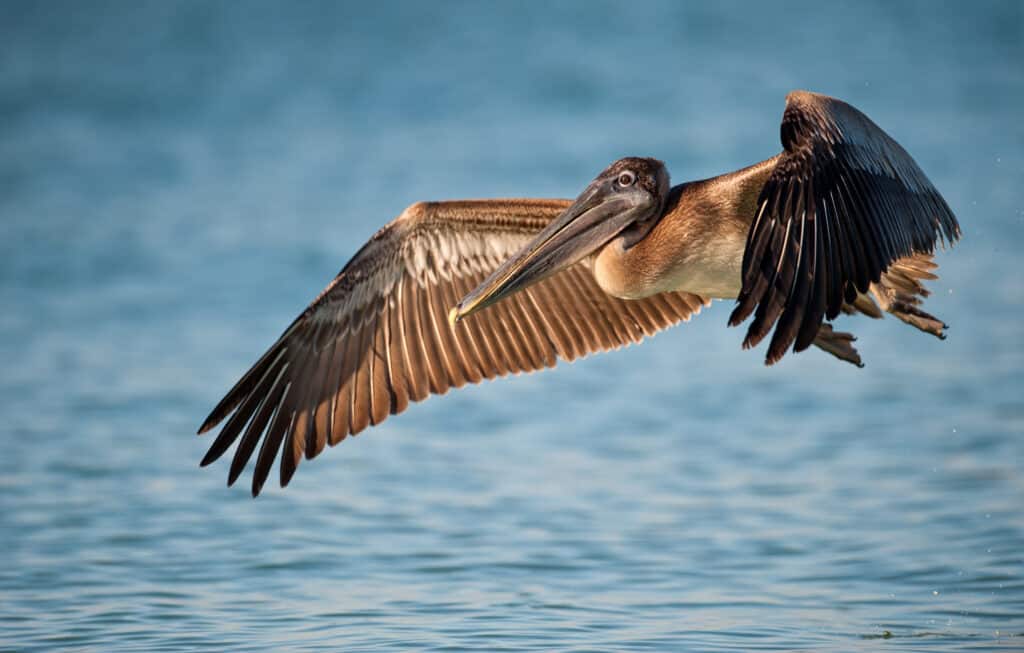
Brown pelicans have a wingspan of more than seven feet.
©Nagel Photography/Shutterstock.com
The brown pelican is one of the most frequent of the larger birds you will see on the Georgia coast. Their plumage changes with the seasons, with a brown neck and white strip in the summer, and in the winter they change to a full-white head and neck.
These birds often fly just above the water and can be seen diving head-first into the water after their prey.
2. American White Pelican (Pelecanus erythrorhynchos)
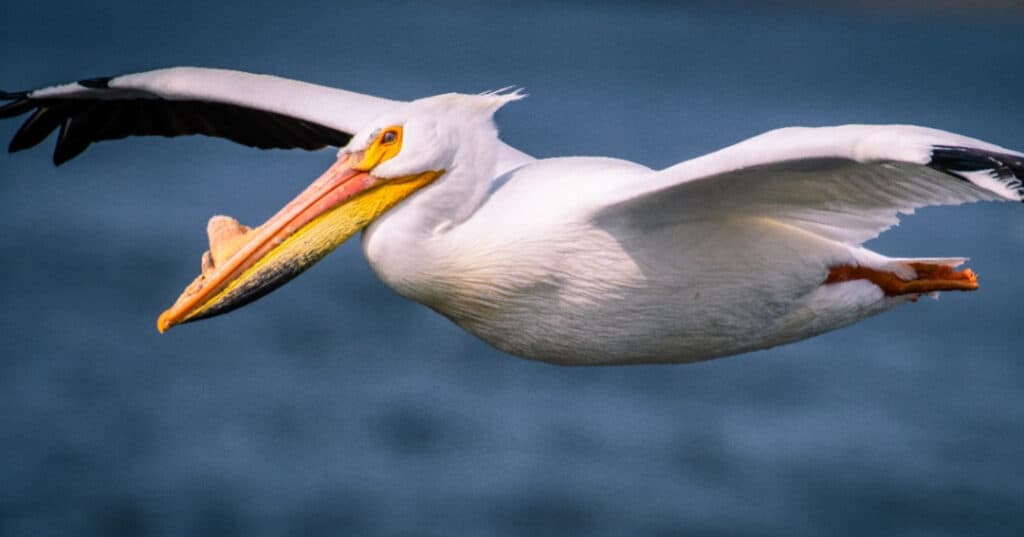
American white pelicans have a wingspan of nine feet.
©Jerek Vaughn/Shutterstock.com
A very large bird with yellow feet and white plumage. Unlike the brown pelican, these birds feed in groups by floating on the water and dipping their bills below to catch fish.
3. Bald Eagle (Haliaeetus leucocephalus)
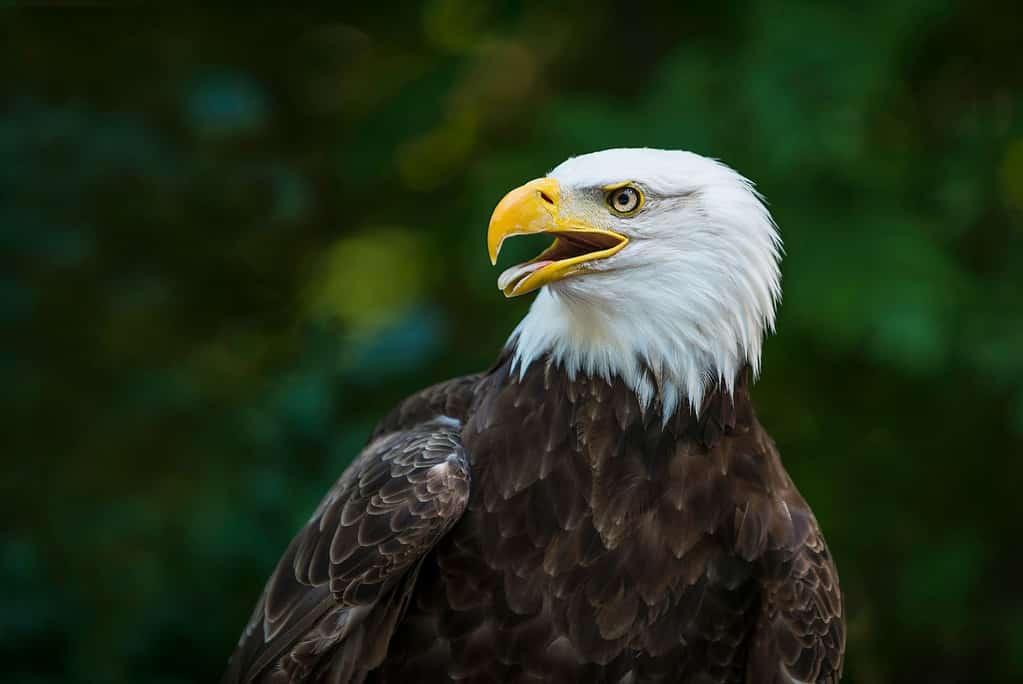
As you can see, the bald eagle is not actually bald but is covered by white feathers.
The national bird of the United States. This bird has a brown body and an iconic white head. The bald eagle builds the largest nest of any species in the world, with their nests regularly reaching 13 feet deep, 8.2 feet wide, and weighing one ton. They were once listed as endangered, but have since recovered to “threatened” status. Still, if you see one, count yourself lucky!
4. Osprey (Pandion haliaetus)

An osprey after a successful dive into the water.
©Gregory Johnston/Shutterstock.com
The osprey has a white head with a dark strip through the eyes, their bodies are dark brown with a white underside. They build their nests in many places, including dead trees and beach structures. You can see them flying lazily above shore waters before diving feet-first to catch their prey.
5. Red-tailed Hawk (Buteo jamaicensis)
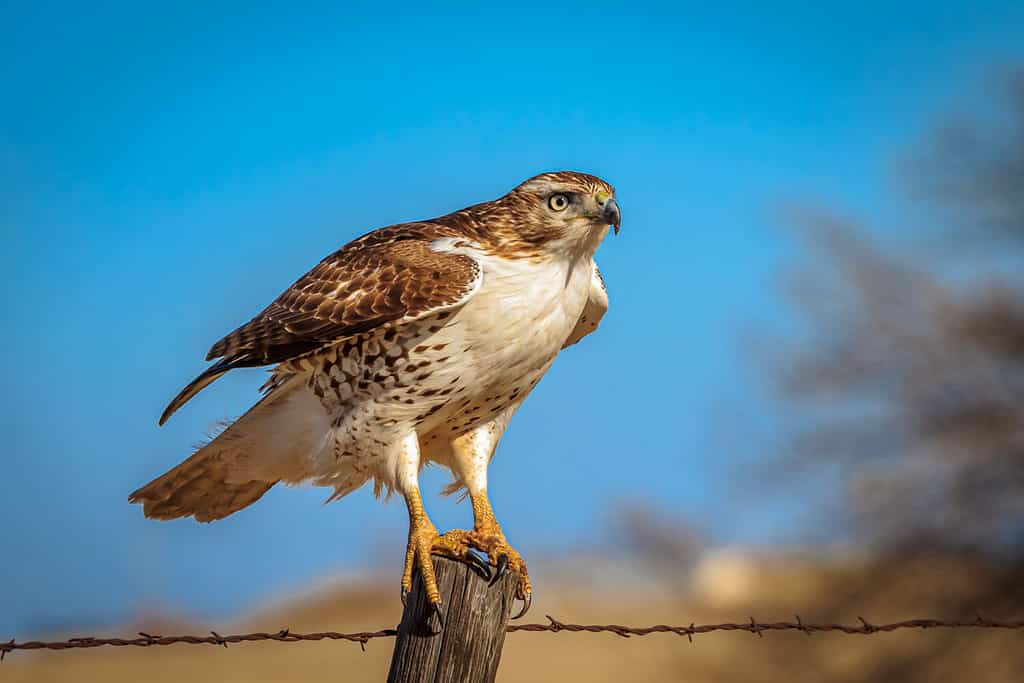
You can see the red-tailed hawk in this position: watching patiently atop trees or poles.
©Richard G Smith/Shutterstock.com
The most common hawk in North America, you will recognize the red-tailed hawk by its red-brown color and white belly. This bird is more likely to hunt rodents and other small animals.
6. Northern Gannet (Morus bassanus)
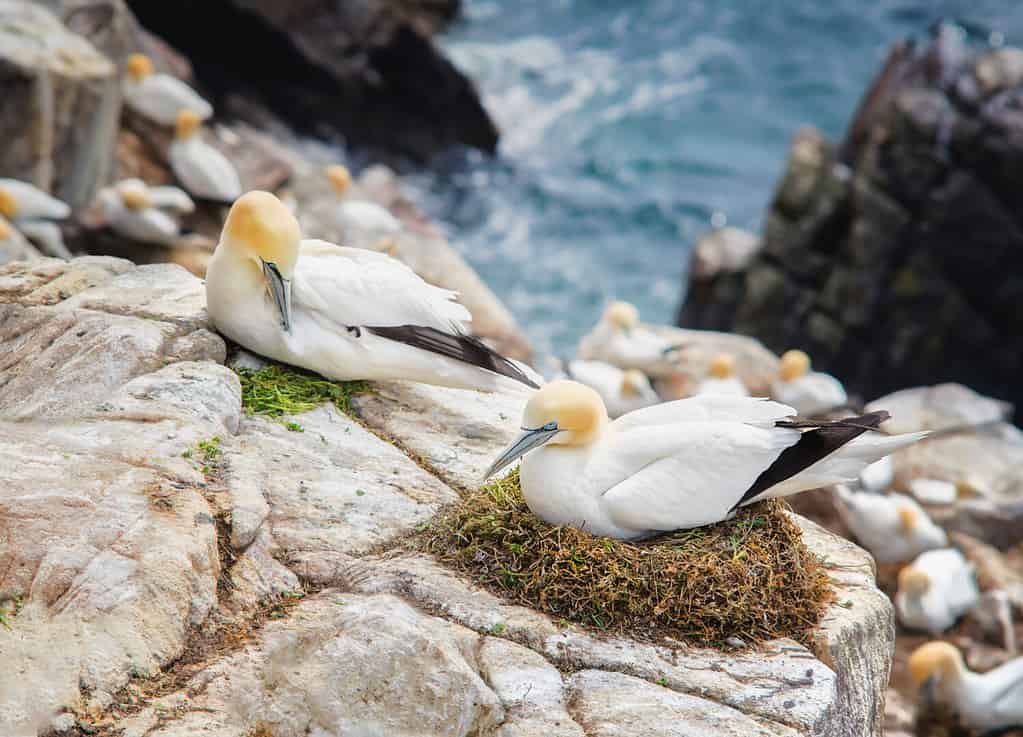
The northern gannet is seen in its natural nesting environment.
©Algirdas Gelazius/Shutterstock.com
This bird is recognizable by its bright white plumage, yellowish head, and white beak with piercing blue eyes. The northern gannet dives into the ocean water to hunt fish.
7. Black Vulture (Coragyps atratus)
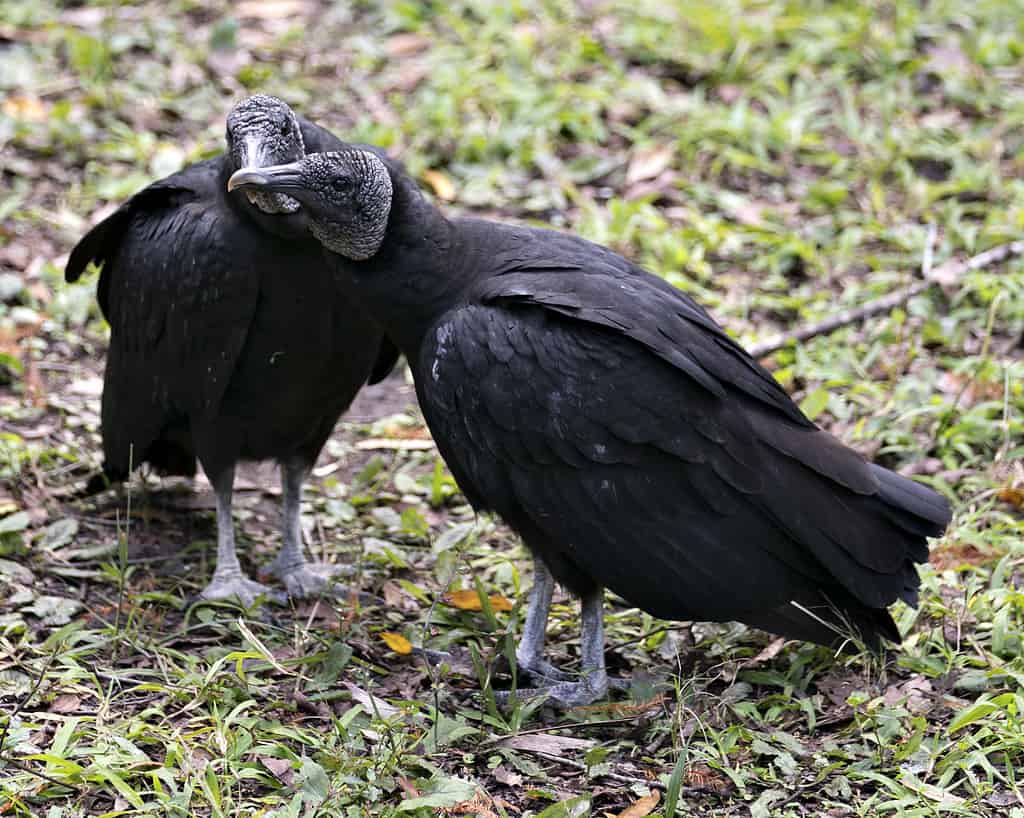
Black vulture couple cuddling.
©iStock.com/Rejean Bedard
The first of two vulture species that frequent the area, the black vulture is a scavenger bird often seen near roadkill or soaring high over the landscape looking for easy prey. Since it lacks the vocal organ most birds possess (the syrinx) the black vulture only makes low grunting noises or hisses.
8. Turkey Vulture (Coragyps aura)
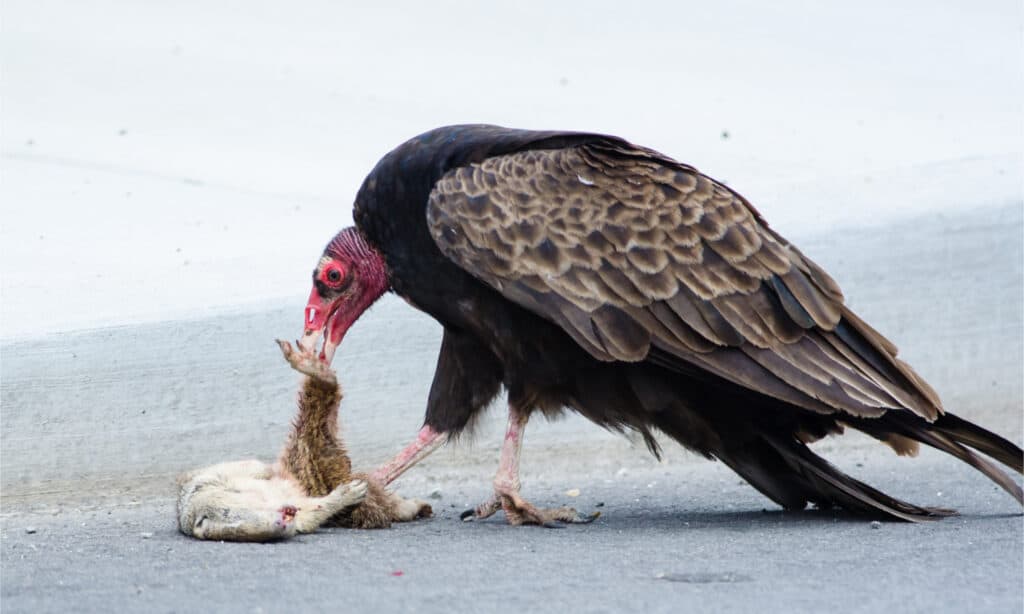
Turkey vultures feed on carrion, which is why they are known as nature’s clean-up crew.
©hubert999/Shutterstock.com
Our second scavenger along Georgia’s coastline, but arguably the more recognizable, the turkey vulture is often seen rocking on tree branches or telephone poles above roadkill or carrion.
9. Semipalmated Plover (Charadrius semipalmatus)

Given their penchant for setting their nests on the ground, make sure you watch your step in areas they inhabit.
©Dee Carpenter Originals/Shutterstock.com
A small bird with brown backs and white bellies, this bird forages for food on the beaches. They also build their nests on the open ground away from large plants. So, be careful if you go exploring inland.
10. Killdeer (Charadrius vociferous)
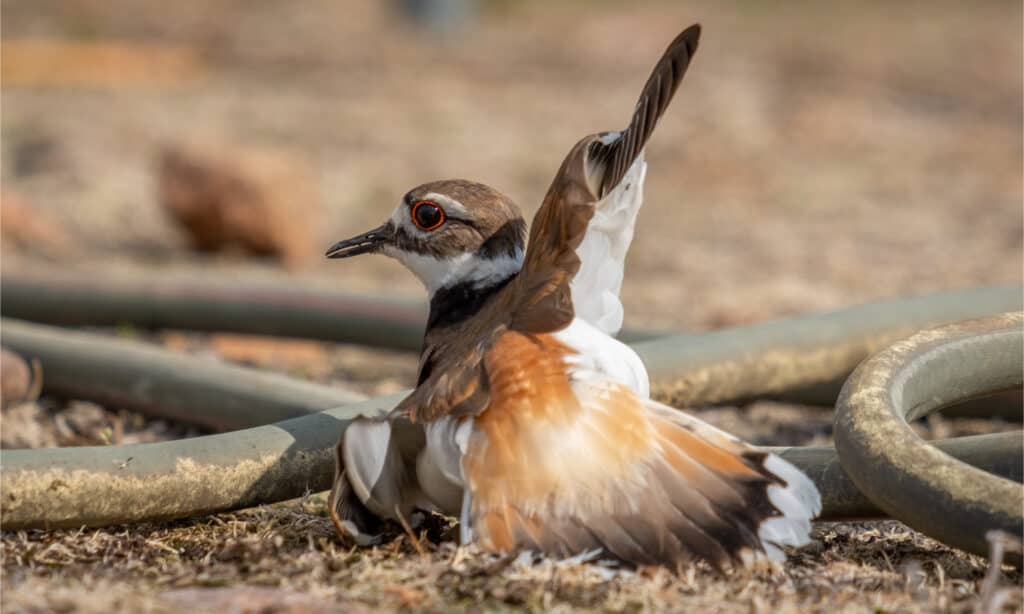
Killdeers feign injury to lure predators away from their nests.
©samray/Shutterstock.com
Recognizable by two black bands on its neck and white belly, the killdeer is actually incapable of killing deer, even if it wanted to!
However, the killdeer is one of the birds that can best use the “broken-wing” skill. When a predator is approaching their nest, the killdeer will pretend to have an injury, usually a broken wing, in order to lure the predator away with the hopes of easy prey.
11. Black-Necked Stilt (Himantopus mexicanus)
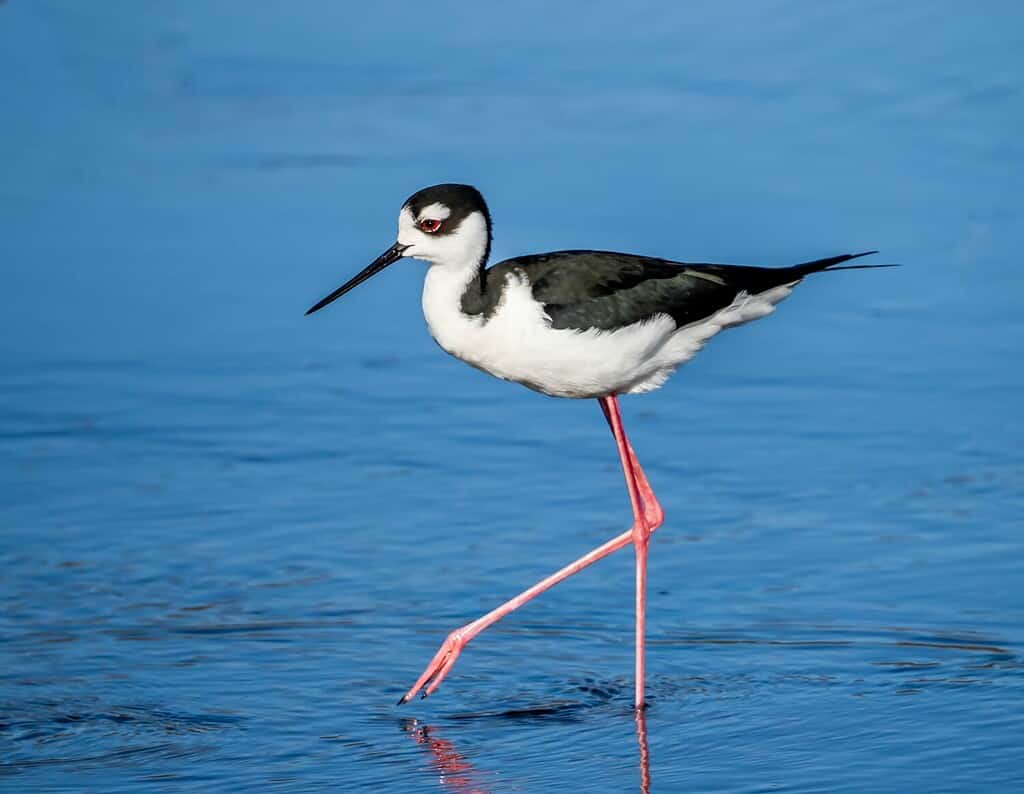
Thin legs and tiny bills make this bird easily identifiable.
©Jim Schwabel/Shutterstock.com
These birds can be recognized by their long legs and thin needle-like bills. They are often seen wading across the beaches sticking their bills into the sand to find small animals to eat.
Be careful if you get too close to their nests, though. They will often employ a “popcorn display” of flapping their wings and leaping up and down to warn that you’re approaching their home. If you continue to approach, the Black-necked Stilt has been known to attack humans from behind by hitting them with their legs.
12. American Avocet (Recurvirostra americana)

A feeding technique called scything distinguishes American avocets.
©Shenille C, CC BY-SA 3.0, via Wikimedia Commons – Original / License
A truly fascinating and intelligent bird! This is a fascinating species to watch during their hunting routine if you ever get the chance. They will wade through shallow waters and feed using a technique known as “scything.” This is when they will sweep their bills back and forth like a farmer using a scythe, capturing fish as they go.
Additionally, the avocet can simulate the Doppler effect by making a loud series of notes that rise in pitch, which tricks any approaching predator by making them think the Avocet is approaching much faster than it really is.
The American avocet also practices a nesting style known as brood-parasitism. This is when they lay their eggs in the nests of other related species of Avocets or Gulls so that they raise their young as their own.
13. Greater Yellowlegs (Tringa melanoleuca)
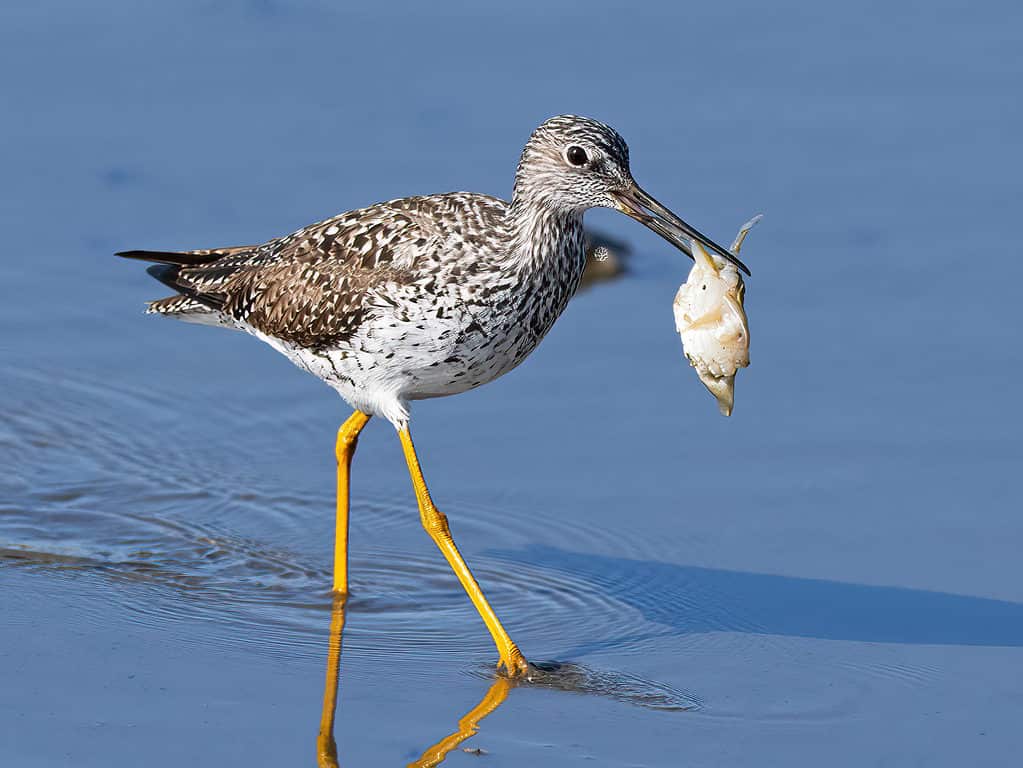
The sight of a greater yellowlegs is truly mesmerizing.
©iStock.com/BrianEKushner
Bright yellow legs and a speckled coat make this bird a beautiful sight along Georgia’s coastline. They breed in the far north and spend the winters in the south of North America.
14. Lesser Yellowlegs (Tringa flavipes)
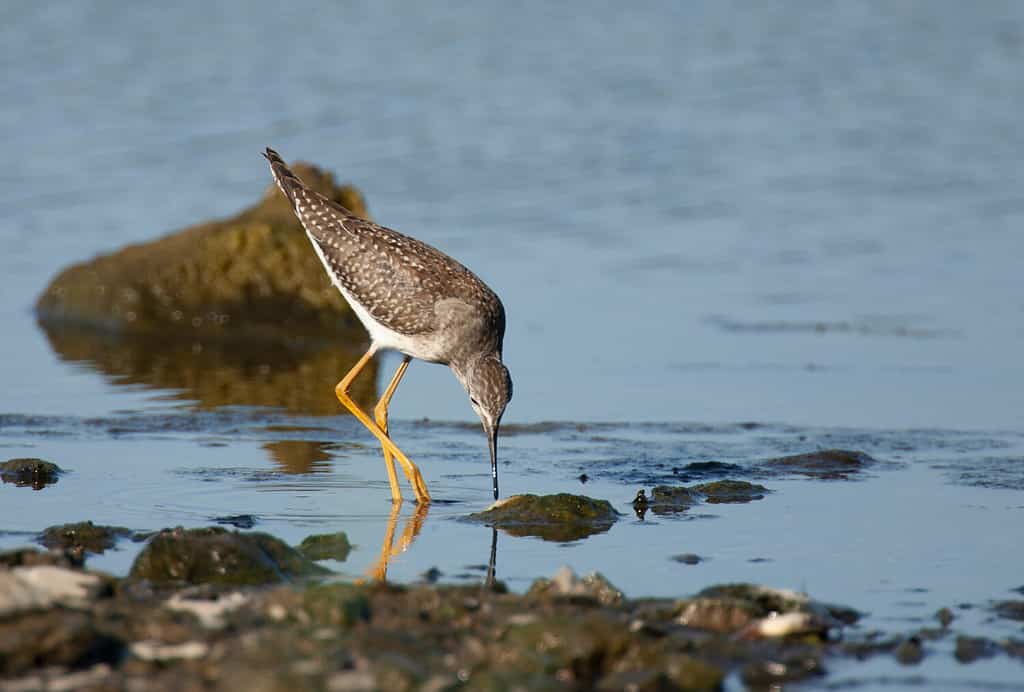
Lesser yellowlegs poking its beak in the sand looking for a meal.
©Dennis W Donohue/Shutterstock.com
Similar in appearance, though much smaller than the greater yellowlegs. The lesser yellowlegs have been known to migrate all the way to Western Europe, with up to five birds arriving each year.
15. Spotted Sandpiper (Actitis macularius)
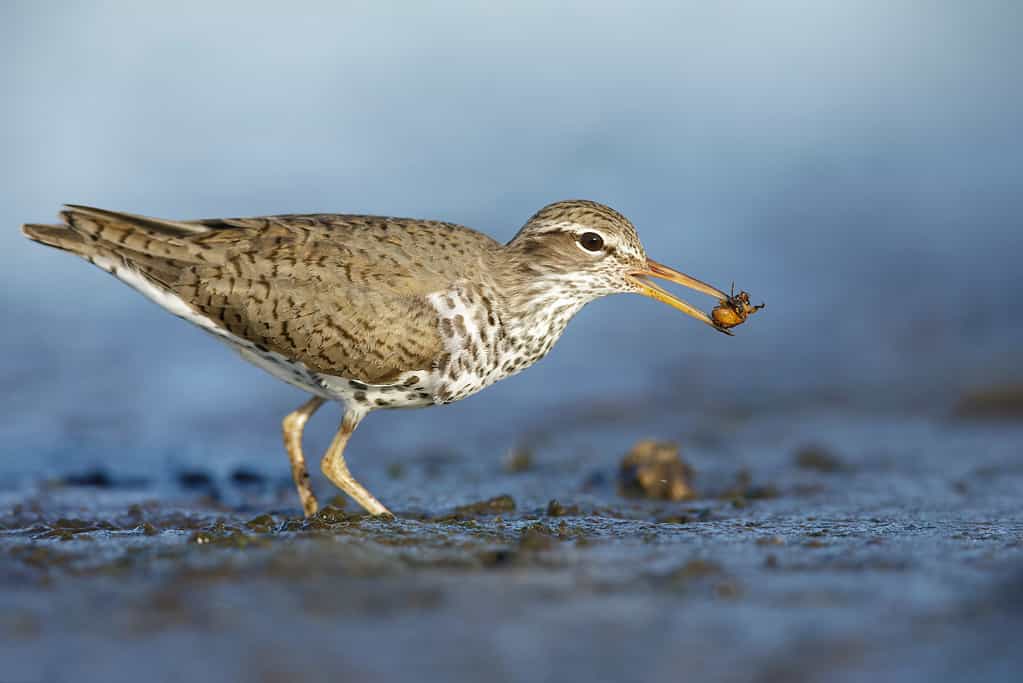
The spots on a spotted sandpiper can indicate its health.
©Agami Photo Agency/Shutterstock.com
A common sight among birds along Georgia’s coastline, birdwatchers can identify the health of a spotted sandpiper by the spots on its belly. The more spots a bird has and the more vibrant those spots are, the healthier the bird.
16. Willet (Tringa semipalmata)
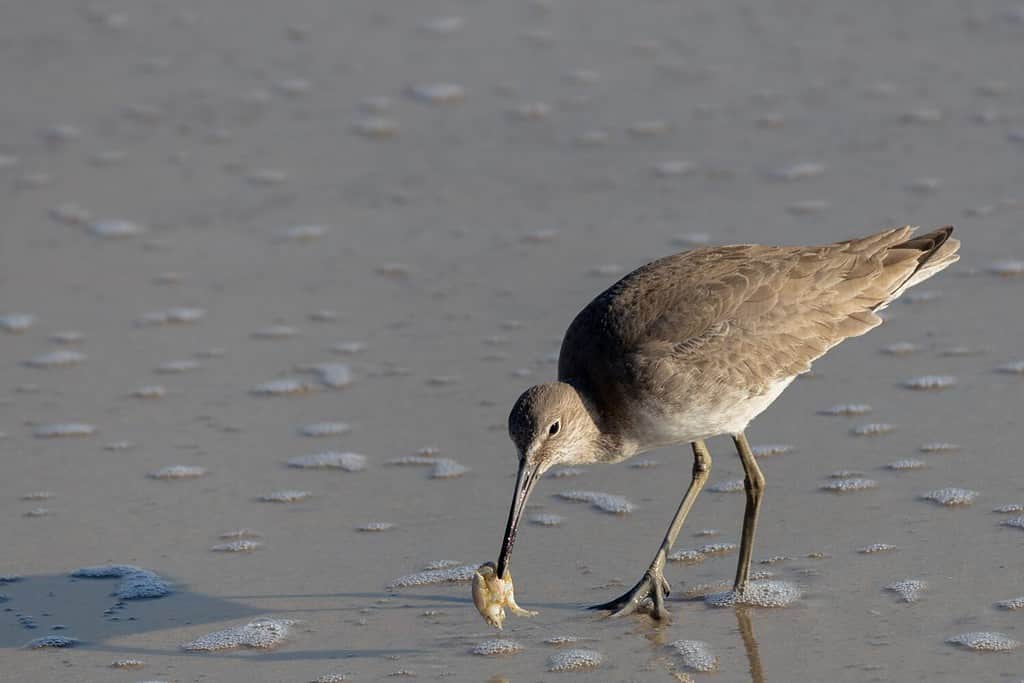
Crabs are a primary part of the willet diet.
©Leodidthis/Shutterstock.com
The willet got its name from its high-pitched and piercing territorial song which sounds like “pill-will-willet”. Although some describe them as the inelegant cousin of the lesser yellowlegs, willets are still graceful and beautiful shore hunters.
17. Ruddy Turnstone (Arenaria interpres)
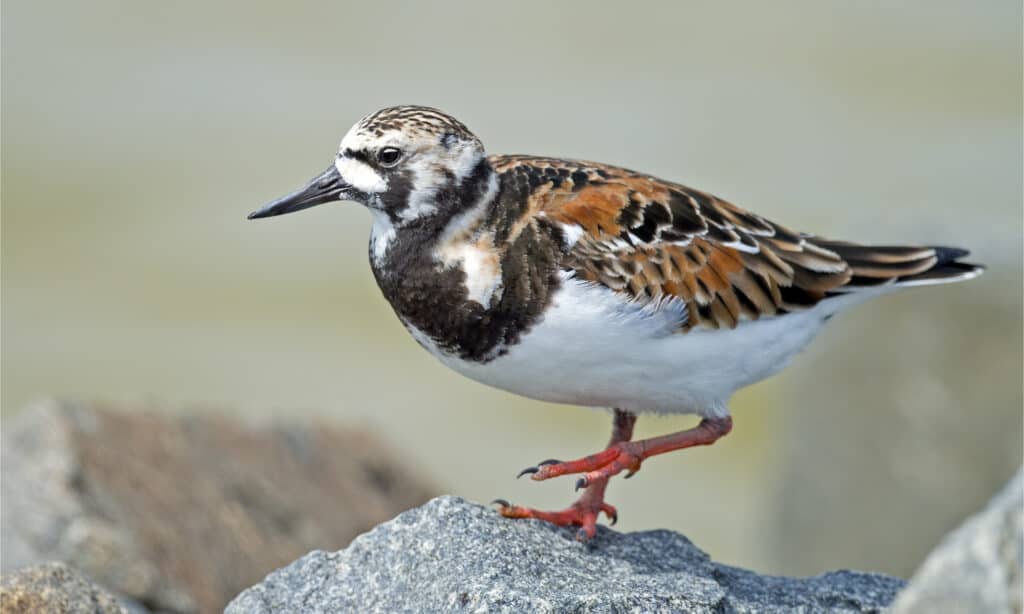
A ruddy turnstone will find food by using its bill to flip stones over in the hope that food is underneath.
©Brian E Kushner/Shutterstock.com
As you might have guessed, the ruddy turnstone got its name from its habit of turning stones over. This they do by inserting their bills under all kinds of stones, small objects, and shells to look for food that might be hiding underneath. In fact, many have seen ruddy turnstones working together to flip over larger objects they wouldn’t be able to flip by themselves.
18. Dunlin (Calidris alpina)

Particularly common along Georgia’s coastline are dunlins.
©Simonas Minkevicius/Shutterstock.com
The dunlin is one of the most common species of “wader” birds along Georgia’s coastline. They often form large flocks that swirl in synchronized flying patterns during migration season.
19. Least Sandpiper (Calidris minutilla)

Least sandpipers are capable of great patience in their search for insects.
©Carrie Olson/Shutterstock.com
The least sandpiper is the smallest shorebird along Georgia’s coastline. They are often covered in mud because they are so small and spend most of their time hopping through the wetlands in search of insects.
20. Long-Billed Dowitcher (Limnodromus scolopaceus)
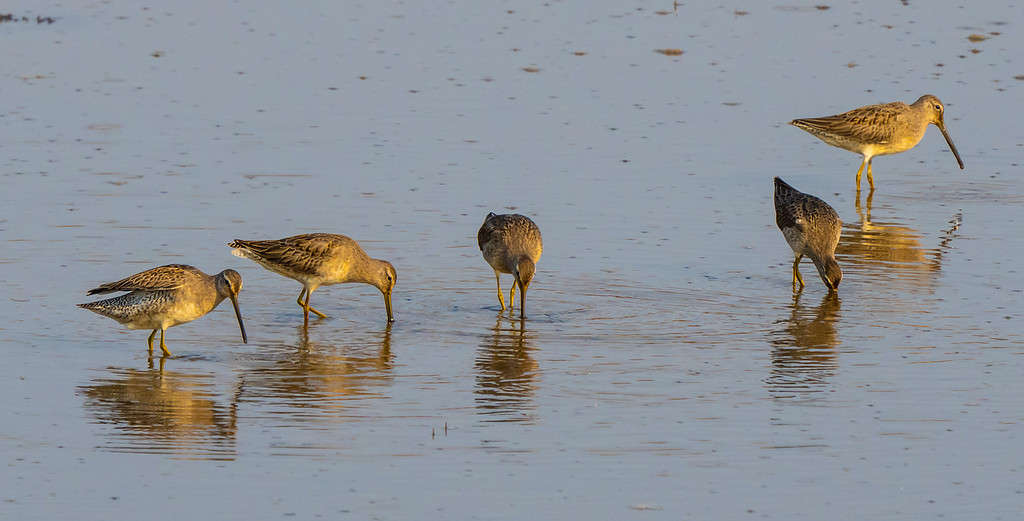
Long-billed dowitchers move their bills in peculiar patterns when they search for food in the water.
©1441292903/ via Getty Images
This species is an interesting one to watch if you get the chance. They hunt for fish by keeping their bill underwater and moving in a “sewing machine” pattern. The males also chase the females during mating season in exciting high-speed pursuits.
21. Short-Billed Dowitcher (Limnodromus griseus)

Short-billed dowitchers look strikingly similar to their long-billed relatives, aside from the noticeably shorter bills.
©2009fotofriends/Shutterstock.com
Recognizable by their yellow legs, reddish belly, and dark brown spotted back. Like many other species of birds, their plumage changes during mating season, with breeding variants gaining more vibrant colors and patterns.
22. Wilson’s Snipe (Gallinago delicate)
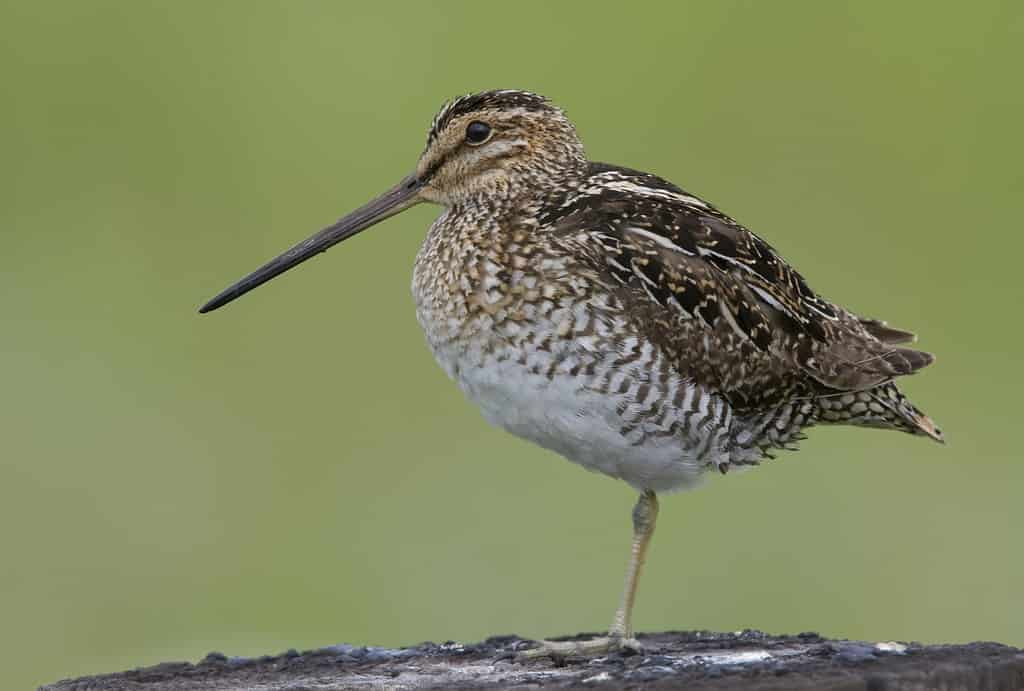
Wilson’s snipes have the propensity to stand on one leg. In fact, that’s how they sleep!
©Wilson’s Snipe (Gallinago delicata) – Original
The courtship behavior of the male Wilson’s snipe is known as “winnowing.” They fly in concentric circles high into the sky, then dive sharply back down. This dive produces a sound known as drumming when their tail feathers vibrate in the wind.
23. American Woodcock (Scolopax minor)
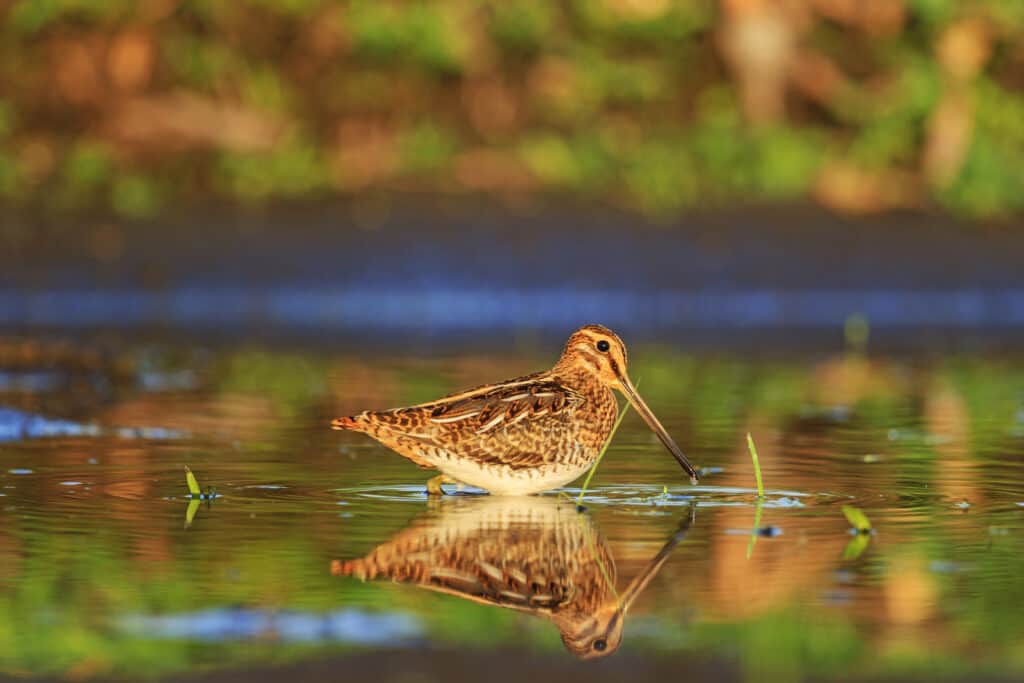
American woodcocks sometimes rock back and forth as they walk to aid their search for worms.
©iStock.com/drakuliren
The American woodcock likes to spend most of its time on the ground along Georgia’s coastline. Because of this, it is a popular game bird in North America. This has contributed to its steady population decline. However, because of its beautiful courtship displays, many people see the American woodcock as a sign of springtime in many areas.
24. Black-Bellied Plover (Pluvialis squatarola)

Black-bellied plovers are a particularly beautiful sight.
©Elliotte Rusty Harold/Shutterstock.com
Unique among most shore birds, the black-bellied plover earned its name from the dark black plumage on its belly. The fluffy white feathers on its back and head give this bird a striking appearance.
25. American Oystercatcher (Haematopus palliates)
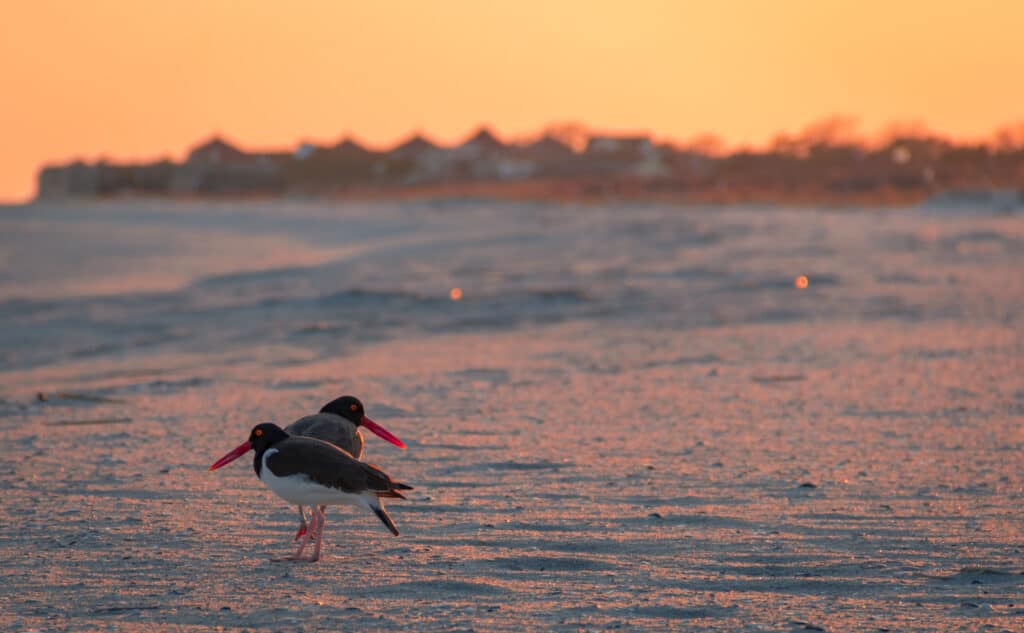
American oystercatchers looking for their preferred prey: mollusks.
©iStock.com/Rabbitti
A beautiful bird along Georgia’s coastline, the oystercatcher got its name from its feeding style of searching out clams, oysters, and mussels to feed on. They do this by looking for shells that are partially open and snapping the muscle that closes the shell, leaving it open for them to eat. This is a dangerous practice, however. If the Oystercatcher cannot sever the closing muscle in time, their beak will become trapped within the shell, and the bird will drown when the tide returns.
26. Red Knot (Calidris canutus)
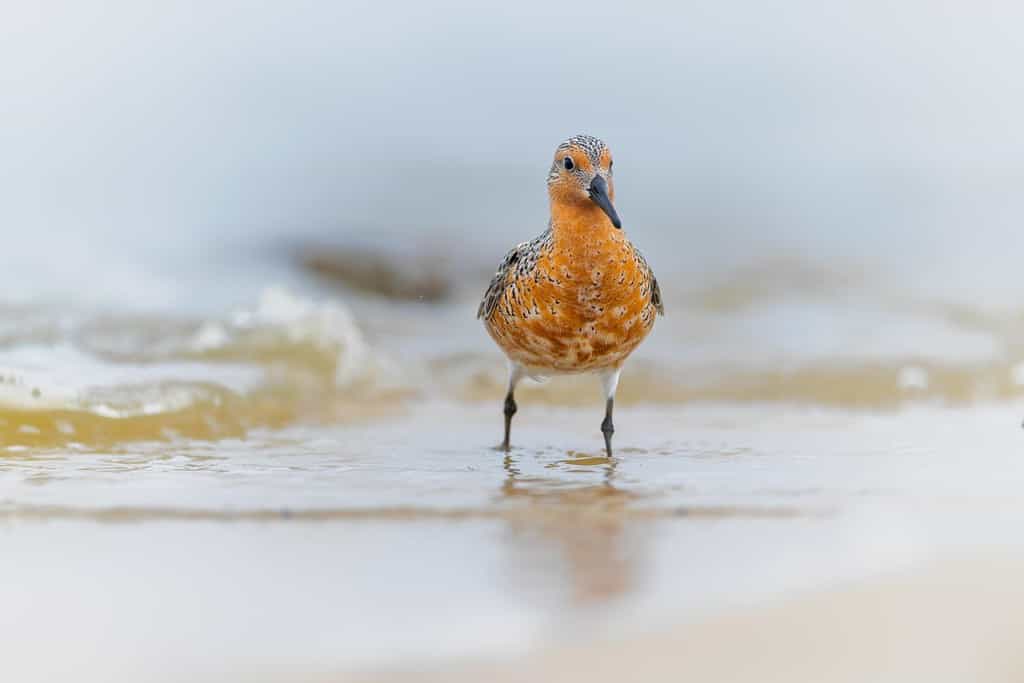
You will rarely see a red knot alone like this in the wild. Most likely, they will be surrounded by thousands of other red knots.
©Buvana Bala/Shutterstock.com
The red knot is one of the longest-distance migratory birds in the world, often traveling as far as 9,300 miles from North to South. To help with these long journeys, red knots travel in massive flocks that are much larger than other migratory birds. They also visit the same stopping sites every year.
| Common Name | Scientific Name |
|---|---|
| Brown Pelican | Pelecanus occidentalis |
| American White Pelican | Pelecanus erythrorhynchos |
| Bald Eagle | Haliaeetus leucocephalus |
| Osprey | Pandion haliaetus |
| Red-tailed Hawk | Buteo jamaicensis |
| Northern Gannet | Morus bassanus |
| Black Vulture | Coragyps atratus |
| Turkey Vulture | Coragyps aura |
| Semipalmated Plover | Charadrius semipalmatus |
| Killdeer | Charadrius vociferous |
| Black-Necked Stilt | Himantopus mexicanus |
| American Avocet | Recurvirostra Americana |
| Greater Yellowlegs | Tringa melanoleuca |
| Lesser Yellowlegs | Tringa flavipes |
| Spotted Sandpiper | Actitis macularius |
| Willet | Tringa semipalmata |
| Ruddy Turnstone | Arenaria interpres |
| Dunlin | Calidris alpina |
| Least Sandpiper | Calidris minutilla |
| Long-Billed Dowitcher | Limnodromus scolopaceus |
| Short-Billed Dowitcher | Limnodromus griseus |
| Wilson’s Snipe | Gallinago delicate |
| American Woodcock | Scolopax minor |
| Black-bellied Plover | Pluvialis squatarola |
| American Oystercatcher | Haematopus palliates |
| Red Knot | Calidris canutus |
The photo featured at the top of this post is © TravisPhotoWorks/Shutterstock.com
Thank you for reading! Have some feedback for us? Contact the AZ Animals editorial team.







